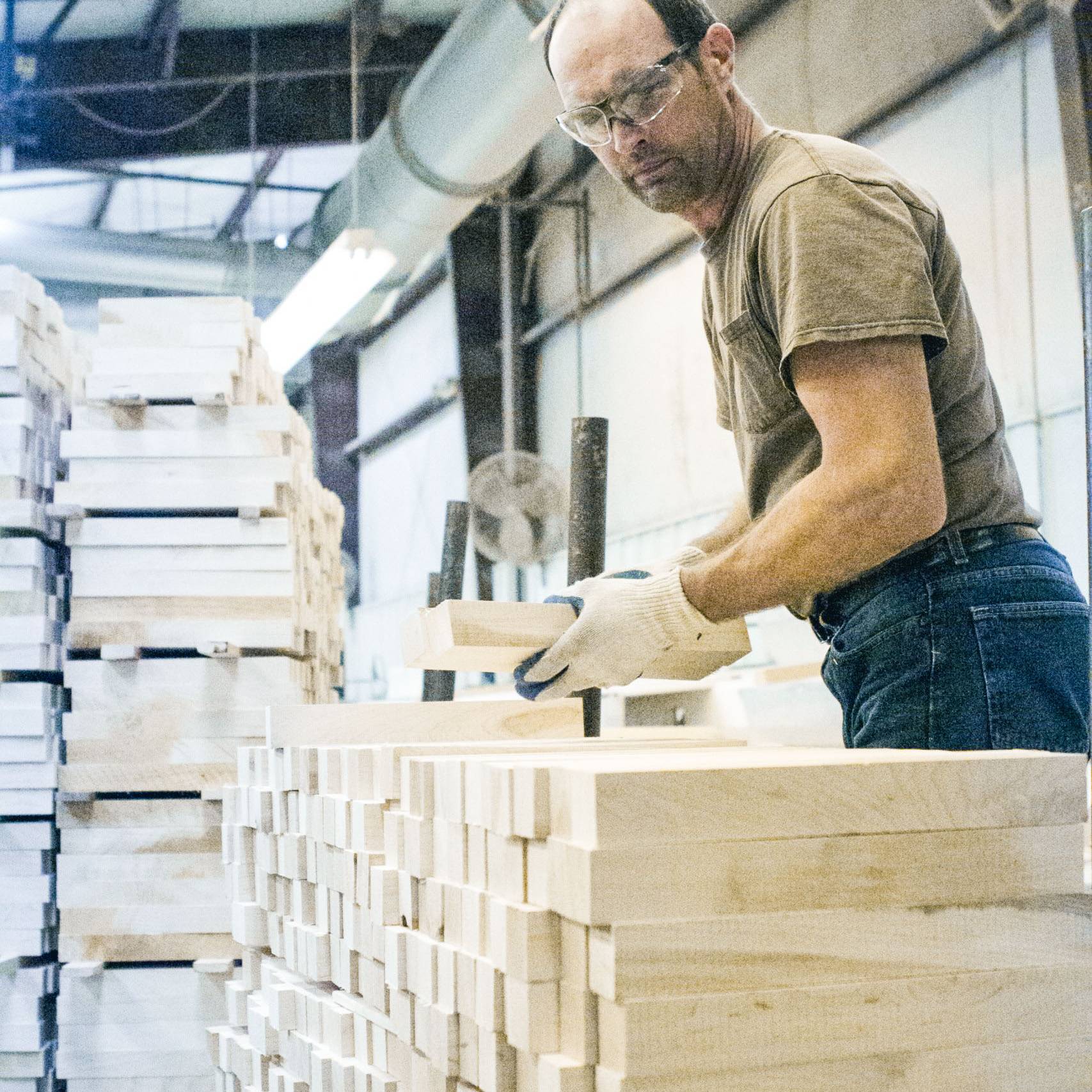Sustainable Material -Boos' love of wood
For us, there’s only one true material for butcher blocks and cutting boards: WOOD! North American Hardwoods to be precise. We have relied on this natural marvel material for over 135 years and have always respected the hardwood we use and the environment from which it comes.
You know by now that we love wood and what we do, and will stop at nothing when it comes to crafting the finest wooden butcher block products and cutting boards on the market. But that’s only the beginning of what sets John Boos & Co apart.
By using renewable, sustainable North American hardwoods such as North American Hard Maple, American Cherry and American Black Walnut, we can help keep our planet (and our products) beautiful, vibrant, and resourceful for generations to come.
Sustainable Wood Management
As the oldest manufacturer and a leader in our industry, we are committed to the preservation and protection of our environment as well as the enrichment of our communities. As an integral part of our business practice, we place particular emphasis on sustainability and environmentally responsible processes in the manufacturing of our products.
As a key member of the NHLA (National Hardwood Lumber Association) for almost 60 years, we are committed to practicing sustainable forestry and sound forest management. Thanks to the organization’s reforestation record, the growth of US forests exceeds the amount harvested by 33 per cent. Trees are a renewable resource, and we renew them.
The properties of the wood species we use are helpful here. North America Hard Maple is easy to propagate and transplant and grows quite quickly. American Black Walnut can also be reforested quickly due to their natural regeneration abilities. With American Cherry, the situation is not much different: The trees have a relatively short rotation time and are ready for felling more quickly than other hardwoods.
Our commitment is also to ensure that we can as an industry continue to rely on wood as a resource in the future and that all our customers can benefit and use wood cutting and food prep surfaces and enjoy the art of cooking for generations to come.
NSF-Certified for the US Food Service Industry
Boos Blocks® wooden cutting boards and worktables used in the professional food service industry are certified by the NSF (National Sanitation Foundation). Products that meet the public health and food safety standards receive NSF® certification and are allowed to be used in the food service industry in the USA. NSF® is widely known as the leading independent third party certification body which stands for food safety, hygiene and quality and enjoys the trust of consumers, regulatory authorities and manufacturers.
The strict NSF testing criteria cover product quality, the manufacturing process and all materials and substances used to make the product. The material we use, North American Hard Maple, is therefore an important part of this testing and certification process. North American Hard Maple wood is our preferred hardwood for NSF® certified cutting surfaces because it is sustainable and a superior food prep surface in that it is resilient, durable, sanitary, knife-friendly, easily cleaned and maintained, and inhibits bacterial growth.
Scientifically Proven: Hardwood Cutting Surfaces Are Safe and Sanitary
Many people who enjoy cooking have always assumed that cutting boards made of plastic are safer and more hygienic than those made of wood. But the properties that made plastic popular early on caused a return to wood in the USA, thanks to a study by Dean Cliver published in 1993. Cliver's study proved that wood cutting boards like those from John Boos & Co. are safe for food prep and inhibit bacterial growth and retain their hygienic properties even after prolonged use. Cliver's study not only exposed the fallacies that had existed at the time for condemning wood as a food prep surface but helped change the public perception in the USA that wood is safe as a contact material with food and safe for food preparation.
Since then, there have also been various international studies conducted by leading food science experts and universities that have examined the hygienic properties of wooden cutting boards versus plastic boards. German studies, in particular, have supported Dr. Cliver's findings that wooden cutting boards perform at least as well hygienically. These studies have used our NSF® certified cutting boards. We work with various stakeholders in the food service industry in Germany to enable the use of wood cutting boards in professional kitchens and offer chefs a certified and more environmentally friendly alternative to plastic cutting boards.
Here you will find a selection of studies, in some of which NSF® certified Boos® products were actually used:
Ulrike Kleiner & Ulrike Lampe (Anhalt University of Applied Sciences):
"Comparative study on the hygiene status of wooden and plastic cutting boards in a laboratory model" (2014)
Friedrich-Karl Lücke & Agnieszka Skowyrska (Fulda University of Applied Sciences):
"Hygienic aspects of using wooden and plastic cutting boards, assessed in laboratory and small gastronomy units" (2015)
North American Hardwood – Durable and Aesthetic
There is no doubt that our craftsmen love and know wood and are experts in crafting North American hardwoods into top quality products of beauty, durability and function. The core wood species of Boos Blocks® legacy comes from a renewable and sustainable source of North American Hard Rock Maple. Other commonly used species are American Cherry, and American Black Walnut. North American Hard Rock Maple is recognized in particular as one of the most durable, long lasting and best food preparation surfaces in the world.
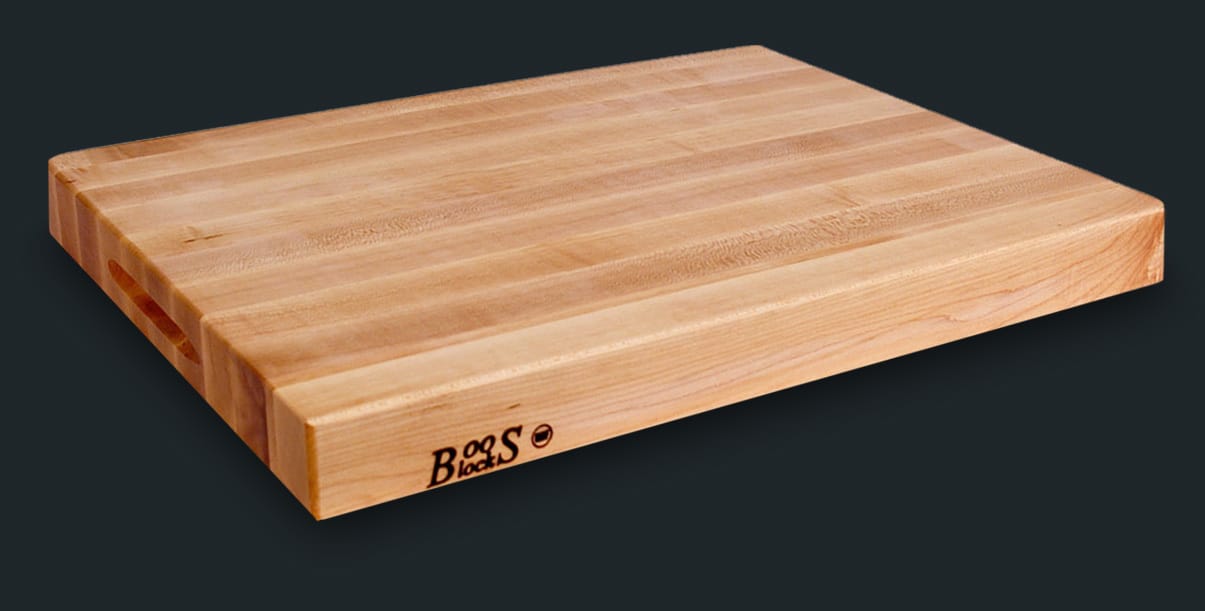
North American Hard Maple is a premium quality, renewable and sustainable hardwood and is resilient, durable, long-lasting, hygienic, knife-friendly, easy to clean and maintain and inhibits bacterial growth. It possesses the ideal hardness with no characteristic odor or taste, other features making it a superior food preparation surface.
North American Hard Maple is a premium quality, renewable and sustainable hardwood and is resilient, durable, long-lasting, hygienic, knife-friendly, easy to clean and maintain and inhibits bacterial growth. It possesses the ideal hardness with no characteristic odor or taste, other features making it a superior food preparation surface. As a result, hard maple has become the standard hardwood for butcher blocks, countertops and cutting boards in the US food service industry.
Heartwood color: light reddish-brown, but sometimes distinctly darker.
Sapwood color: usually white with a slight reddish-brown tinge.
Grain: tight grain structure that is fine, even and uniform in texture
Latin name: Acer saccharum
Occurrence: mainly in the western areas of the Great Lakes as far as Nova Scotia, Canada, and further through Pennsylvania, Ohio, Michigan, Wisconsin and Indiana
Hardness in Janka: 1450
North American Hard Maple (also known as the sugar maple) is also the maple specie most often tapped for maple syrup. It is harder and denser than all other species of maple commercially available, making it also prized for furniture and flooring. An attractive blonde wood, hard maple has a universal look and goes with any décor.
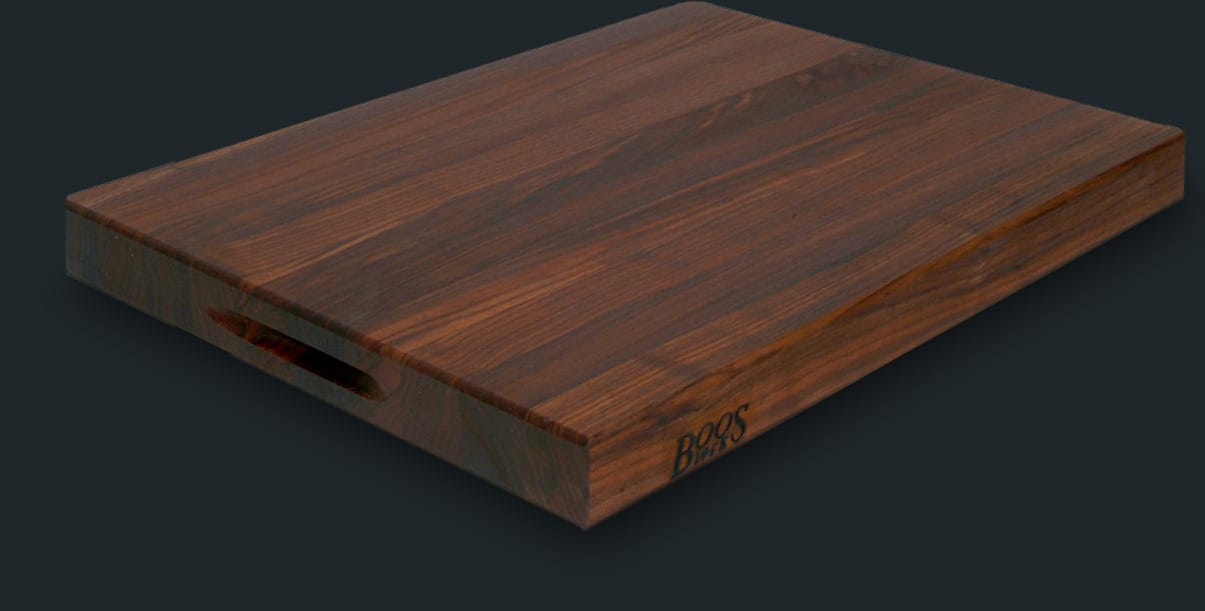
Black Walnut is America's only dark brown hardwood species. A hardwood that is highly sought for its natural beauty! It is characterized by a noble chocolate-colored hue and grain in combination with its hardness and durability. Due to its striking color, it forms a strong contrast to other hardwoods.
Heartwood color: light brown to dark chocolate brown, occasionally with a purplish tinge and darker streaks
Sapwood color: creamy white
Grain: mostly straight-grained, sometimes wavy or curly
Latin name: Juglans nigra
Occurrence: from the East Coast to the Great Plains and down to the Gulf of Mexico, three quarters of the trees grown in the central USA
Hardness in Janka: 1010
In addition to its use as material for cutting boards, countertops and butcher block products, Black Walnut is mainly used as a material for high-quality furniture.
With American Cherry, Boos® has added another hardwood variety to the product range, which particularly impresses with its warm colors and excellent processing properties.
Heartwood color: rich amber to reddish-brown tones, darkens with time under the influence of light.
Sapwood color: creamy white
Grain: fine, even, straight and not pronounced
Latin name: Prunus serotina
Occurrence: mainly in the Northeast, e.g. Pennsylvania and New York; overall from the East Coast to the Great Plains
Hardness in Janka: 950
Like Black Walnut, American Cherry is often used in the production of furniture, cabinets, doors, etc. It is also used in the construction of various musical instruments.
End-Grain vs. Edge-Grain


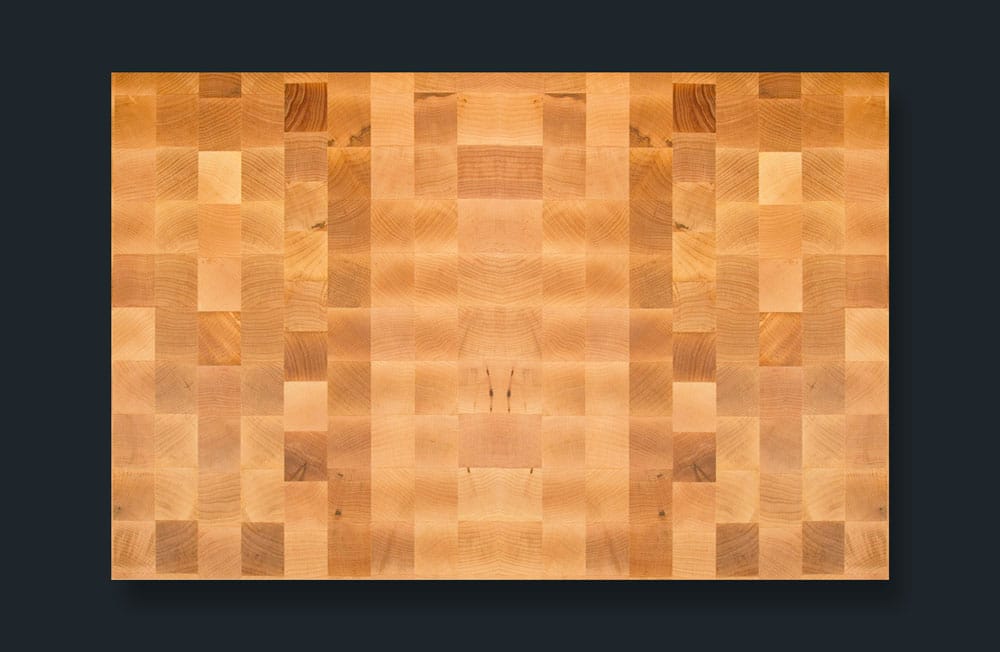
End Grain
End-grain tops are built with individual blocks of wood, set vertically, corner to corner, and glued up for maximum strength and durability. Often referred to as the original butcher block, massive end-grain blocks were popular in the corner butcher shops of yesteryear. Today, we use end-grain construction most often in butcher blocks, kitchen countertops and islands and for smaller cutting board-sized chopping blocks.
Functionally, end-grain provides the most durable and best “feeling” cutting surface, because the knife bites into the end-grain, reducing knife slip. And because end-grain has an open cell structure, the surface is somewhat self-healing, typically exhibiting less wear as a cutting surface than an edge-grain top.
Stylistically, the “checkerboard” pattern of end-grain construction creates a dramatic design statement in today’s home kitchens, often with lots of color variation and grain character.
Edge Grain
Edge-grain tops are built by stacking wood staves of various lengths and widths on their sides – or edge.
The staves are then glued up for maximum strength and durability. Edge-grain is probably the most popular construction style today and it’s used throughout our entire line – for standard countertops, kitchen islands, commercial food service tops, professional cutting boards and industrial workbench tops.
Functionally, edge-grain is less durable relative to end-grain construction, but still provides an extremely solid work surface. As a cutting surface, edge-grain surfaces perform nearly as well as end-grain surfaces, but do show wear more quickly. Of course, the beauty is what living brings in, sandpaper takes out. The wood can be easily restored to its original condition.
Stylistically, edge-grain features a tighter, more consistent grain pattern that runs parallel along the length of the top. Colors can vary within the same top and species, as both sapwood and heartwood is used in the construction.
